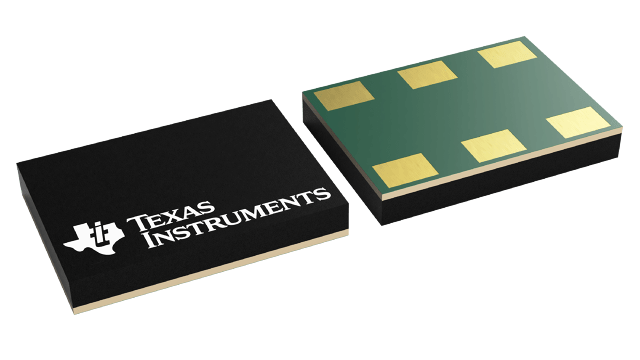Gehäuseinformationen
| Gehäuse | Pins QFM (SIA) | 6 |
| Betriebstemperaturbereich (°C) -40 to 85 |
| Gehäusemenge | Träger 250 | SMALL T&R |
Merkmale von LMK61E08
- Ultra-Low Noise, High Performance
- Jitter: 90-fs RMS Typical fOUT > 100 MHz on LMK61E08
- PSRR: –70 dBc, Robust Supply Noise Immunity on LMK61E08
- Flexible Output
Format on LMK61E08
- LVPECL up to 1 GHz
- LVDS up to 900 MHz
- HCSL up to 400 MHz
- Total Frequency Tolerance of ±25 ppm
- System Level Features
- Glitch-Less Frequency Margining: Up to ±1000 ppm From Nominal
- Internal EEPROM: User Configurable Start-Up Settings
- Other Features
- Device Control: Fast Mode I2C up to 1000 kHz
- 3.3-V Operating Voltage
- Industrial Temperature Range (–40ºC to +85ºC)
- 7-mm × 5-mm 6-Pin Package
- Default Frequency:
- 70.656 MHz
Beschreibung von LMK61E08
The LMK61E08 family of ultra-low jitter PLLatinum™ programmable oscillators uses fractional-N frequency synthesizers with integrated VCOs to generate commonly used reference clocks. The output on LMK61E08 can be configured as LVPECL, LVDS, or HCSL. The device features self-start-up from on-chip EEPROM to generate a factory-programmed default output frequency, or the device registers and EEPROM settings are fully programmable in-system through an I2C serial interface. The device provides fine and coarse frequency margining control through an I2C serial interface, making it a digitally-controlled oscillator (DCXO).
The PLL feedback divider can be updated to adjust the output frequency without spikes or glitches in steps of <1ppb using a PFD of 12.5 MHz (R divider=4, doubler disabled) for compatibility with xDSL requirements, or in steps of <5.2 ppb using a PFD of 100 MHz (R divider=1, doubler enabled) for compatibility with broadcast video requirements. The frequency margining features also facilitate system design verification tests (DVT), such as standards compliance and system timing margin testing.
